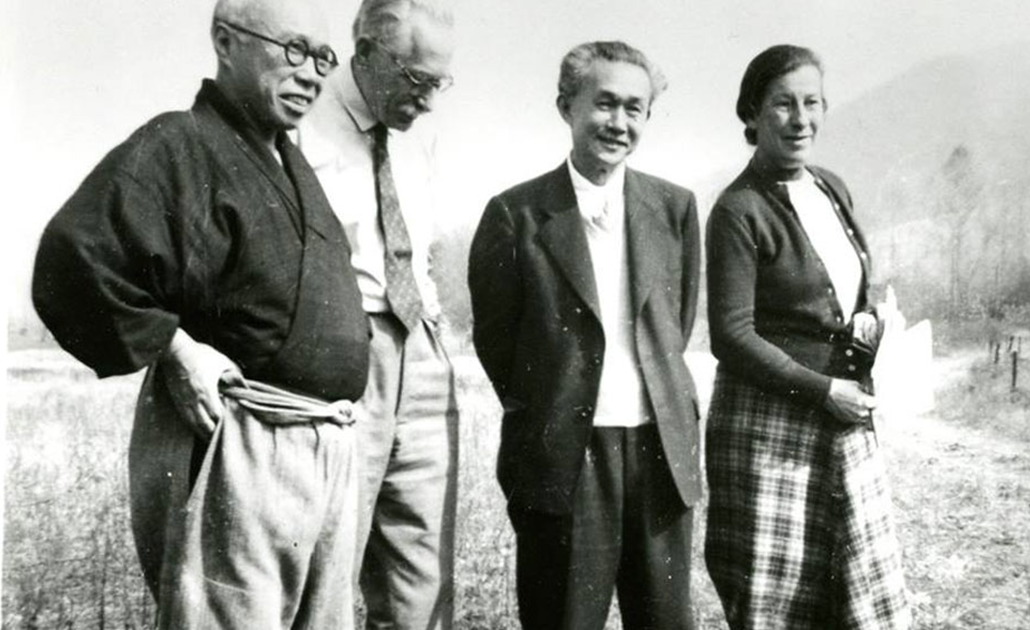Bernard Leach (1887-1979), Hamada Shoji (1894-1978) and Yanagi Soetsu (1889-1961) were key figures in the introduction of Japanese aesthetic culture to the world of modern craftsmanship and of the modern arts of the West to Japan. They were among the most significant voices in the world of craftsmanship in the 20th century.
In 1909 Bernard Leach set out for Japan intending to teach Western printmaking techniques. Instead he took up the study of pottery making. Returning to England in 1920, with his close friend Hamada Shoji, he founded the legendary Leach Pottery in St. Ives, Cornwall. Leach later became world-renowned through the publication of A Potter’s Book, (1940). Based on his encounters with artists, craftsmen and thinkers in Japan, this landmark work introduced ideas quite new to the West.
His influence on ceramic artists around the world was incontestable throughout his life and remains vibrant today. Whether one accepts or rejects his strong sensibility and standards, Leach is ever-present in discussions on meaning and purpose in crafts.
Hamada Shoji went on to become one of the most important artist-craftsmen of his era. Deeply influenced by the local crafts of Japan and Korea, with a firm scientific understanding of his materials and processes, Hamada embodied a renewed vitality in tradition-based craftsmanship. Working continuously over a long lifetime, Hamada was a paradigm for contemporary craftsmen and revered around the world.
The ceramic works of Leach and Hamada are as different as were the men themselves. In Leach we see thought and philosophy in action; in Hamada we find action and warmth in the very human and necessary activity of pot making.
Yanagi Soetsu was a philosopher, Buddhist aesthetician and critic and the central thinker of the Mingei Movement. The most prominent of his works in English is his collection of essays on Buddhist concepts of beauty, known as The Unknown Craftsman (1972).
Yanagi traveled widely in Japan and Korea, seeking objects that were, in his words“…born, not made.” He established the Japan Folk Craft Museum, creating a legacy for craftsmen seeking to invigorate the use of inherited knowledge as a source of direction for the future.
The towering figure in the introduction of Japanese art, culture and thought to the West in the 20th century was undoubtedly Daisetsu (D.T.) Suzuki. Yanagi, Hamada and Leach were directly affected by Suzuki, the man and the thinker. Consideration of the role of Suzuki’s teaching is of central importance to an understanding of the Mingei philosophy.

